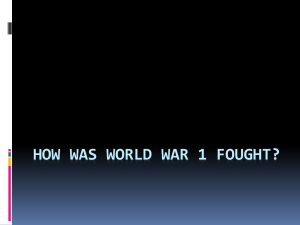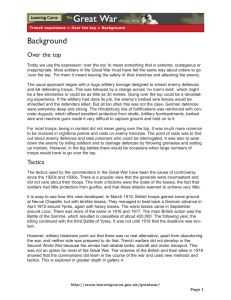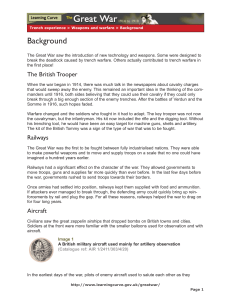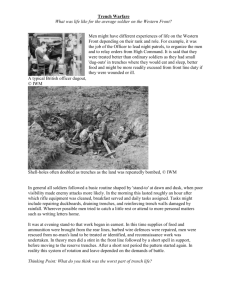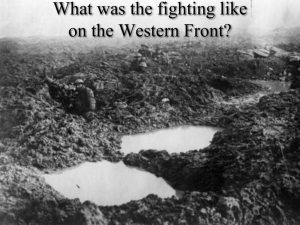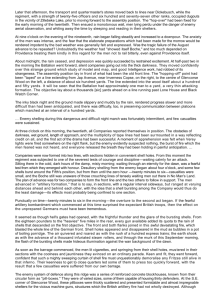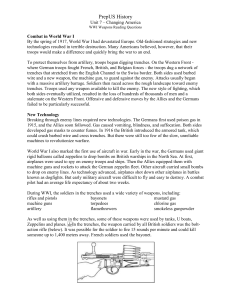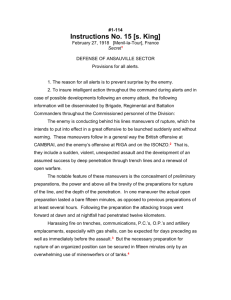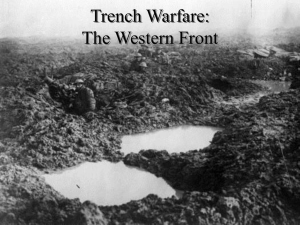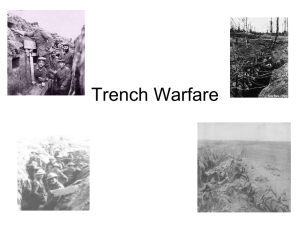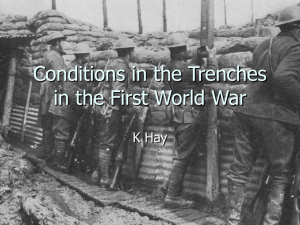What techniques were used in trench warfare?
advertisement
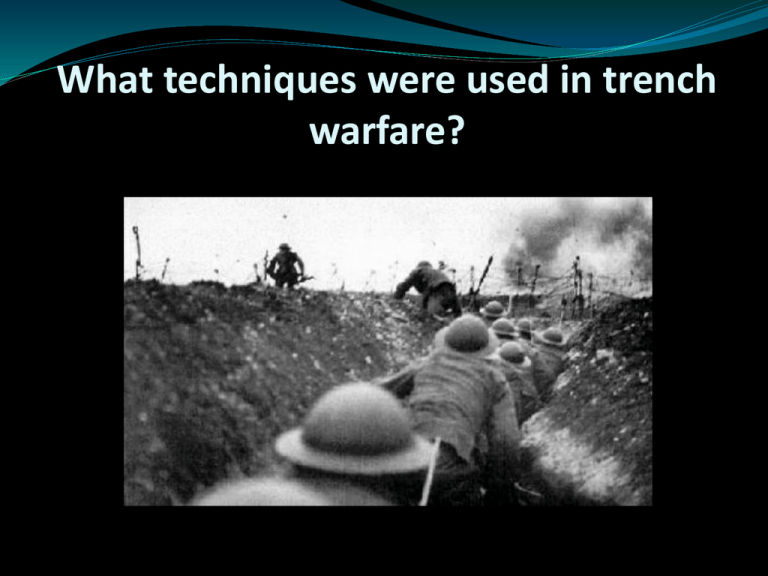
What techniques were used in trench warfare? Learning objective – to be able to identify the ways which the tactics of the First World War were different from the past. I can describe the main features of the ways that the First World War were fought. Grade D I can compare the new ways of fighting in the First World War with what happened in the past. Grade B I can explain the ways which the tactics of the First World War were different to the past. Grade A 6,250 miles of trenches were dug across a stretch of land between Belgium and the Netherlands that lasted 440 miles. A new war? By the end of 1914, the war of movement ground to a halt. Both sides had dug into strong positions across the Western Front and the generals did not know how to break the enemy lines. Before the First World War, battles had been dominated by cavalry charges and infantry troops fighting hand-to-hand combat. These method just did not work with a series of trench lines protected by barbed wire, machine guns and artillery fire. A war of attrition? Both sides tried to make a breakthrough by pouring thousands of men at enemy lines at a concentrated point. This failed. From 1915, both sides adopted a policy of attrition. This involved wearing the enemy down and hoping that the enemies resources would run out before yours. How did an army prepare for an attack? Large numbers of troops were moved to the front line. Extra supplies of ammunition, supplies and coffins were needed. Aerial reconnaissance of the enemy positions. Paths were cut, at night, in your own barbed wire fences and paths marked out with tape. How effective was artillery bombardment? Artillery fire was used to bombard enemy trenches before and, sometimes, during an attack. Bombardments usually stopped just before an attack. This proved to be a dangerous warning to the enemy that an attack was about to happen. Soldiers feared artillery shells the most and were the biggest cause of casualties. What was ‘going over the top’? Once the artillery bombardment was over, the order was given for soldiers to ‘go over the top’. This meant climbing out of the trenches, crossing No Man’s Land and attacking the enemies trenches. This tactic was based on the assumption that the artillery had destroyed the enemy trenches. This was rarely the case and the attackers were easy targets for the machine guns. For much of the war, both sides repeated this tactic again and again. No one could think of a way of breaking this stalemate. How did Verdun symbolise the policy of attrition? Verdun was a French fortress city close to the border with Germany. Highly defended, it was a symbol of French military power, which they would defend at all costs. The Germans knew this and attacked Verdun knowing that the French would place huge resources to save the city. Between February and July 1916, 900,000 men were killed at the battle – 500,000 of them French. The stalemate was not broken but as the French stated ‘They shall not pass …..’ and they did not. Main tasks Define the term ‘attrition’. List the different ways how the First World War was fought. Draw a trench system diagram using the materials to help you. Label on it the key features as well as mark in red why attacks consistently failed. Extension Write a five paragraph essay answering the following question Explain why trench warfare was a new kind of war. Plenary Throw a 12 sided die and choose one of the tasks below to summarise your learning – - With the number thrown, choose x words that summarise what you have learned this lesson and arrange them in a crossword format ensuring all words link together. - With the number thrown, choose x words that summarise what you have learned and write single sentence definitions for them. - With the number thrown, choose x words that summarise what you have learned and write x amount of questions – one for each word you have chosen which is the answer for the separate questions.
